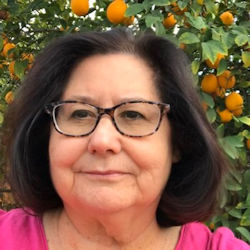SEJournal Online is the digital news magazine of the Society of Environmental Journalists. Learn more about SEJournal Online, including submission, subscription and advertising information.
FEJ StoryLog: SEJ Grant Program Gives Boost to Environmental Coverage
Editor’s Note: SEJournal introduces its newest column, FEJ StoryLog, which builds on the public service reporting work made possible through the Society of Environmental Journalists’ Fund for Environmental Journalism program.
This bimonthly column, edited by independent journalist Carolyn Whetzel, will feature reports on how individual FEJ grantees developed their story ideas, pursued their reporting and got their work published, and invite them to share any lessons learned along the way or advice for other journalists and grant hopefuls.
Below, Whetzel outlines the FEJ program and spotlights some beneficiaries. Watch in coming weeks for our first report from a grant winner.
By Carolyn Whetzel
It’s been 10 years since the Society of Environmental Journalists’ governing board launched the Fund for Environmental Journalism, or FEJ.
 |
| Whetzel, editor of the new column. |
The goal, then as now: to help sustain environmental coverage as news organizations navigate constant budget cuts, layoffs and reorganizations.
To date, SEJ has distributed $2.26 million in large coverage grants and $494,768 in small story grants, according to Executive Director Meaghan Parker.
An estimated $250,000 more will be distributed by the end of 2020, she said.
“The Fund for Environmental Journalism has become an essential part of meeting SEJ’s mission of improving and increasing environmental journalism by supporting the people who produce it,” Parker said.
SEJ matches donors interested in supporting environmental coverage with news outlets seeking funds for staff and independent journalists. Grantees retain full editorial control. While donors may target funds for a specific environmental issue, like climate change, they have no right of review and no influence on story plans.
Two flavors of grants
The FEJ’s large coverage grants are news outlet/funder partnerships that are administered by SEJ, which serves as an editorial firewall between the funders and news outlets.
For example, a multiyear grant underwritten by The Walton Family Foundation allowed The Times-Picayune/NOLA.com to expand its coastal desk for reporting on Gulf of Mexico marine and coastal issues. The William and Flora Hewlett Foundation funded reporting projects on western lands by The Guardian and High Country News/HCN.org.
On the other hand, the FEJ also offers small story grants to newsroom staff and independent journalists to underwrite travel and other expenses for stories that might not otherwise be published.
Story grants are available through a competitive process, independently judged by a panel of experienced environmental editors, like Tim Wheeler, associate editor and science writer at the Chesapeake Bay Journal.
Wheeler, a past SEJ president, has frequently reviewed FEJ grant proposals.
“It often was a real challenge to decide which ones were most deserving of funding,” he said. “I’m glad to see that many of those stories have panned out in print, broadcast and online.”
Grants enhance reporting
In one example, a $4,500 FEJ grant allowed reporter Christine Woodside to take a deep dive into the impacts of routine sewage overflows in a Connecticut coastal community. The grant meant she could spend nearly 100 hours on the project and hire a photographer and graphic designer.
 |
| Bird (at left) and Braxton Little, whose 2012 grant covered travel costs for a story on Chernobyl and Fukushima. |
Woodside writes for the Connecticut Health Investigative Team (C-HIT), a web-based news site. C-HIT ran the three-story series in 2019. The Bridgewater Connecticut Post, Hartford Courant and Connecticut Public Radio picked up two of the stories.
Woodside scored a second-place award from the Connecticut Society of Professional Journalists contest for the series.
[Editor’s Note: Woodside will share her experience in reporting the investigative project in an FEJ StoryLog column to follow on SEJournal Online in the coming weeks].
Another example was that of Winifred Bird and Jane Braxton Little, who scored a $3,500 grant in 2012 to help cover travel costs for their Environmental Health Perspectives story, “A Tale of Two Forests: Addressing Postnuclear Radiation at Chernobyl and Fukushima.”
“Being on the ground allowed us to see the consequences firsthand [and] to include the voices of people living with these disasters,” Braxton Little said. “It gave our story the immediacy and color we could not have provided through distance report.”
The reporting duo won SEJ’s 2014 first-place award for outstanding feature story.
The FEJ program also gave a jump-start to SEJ President Meera Subramanian, who explained, “When I sold my first book, before I’d gotten the pittance of an advance, I applied for a grant from the Fund for Environmental Journalism.”
‘Those few thousand dollars allowed me
to travel around India, reporting on
organic agriculture, water restoration efforts
and girls’ reproductive health.’
- Meera Subramanian, SEJ president
Added Subramanian: “Those few thousand dollars allowed me to travel around India, reporting on organic agriculture, water restoration efforts and girls’ reproductive health that was a chunk of ‘A River Runs Again.’ I don’t know how I would have been able to do the necessary work without the critical help of SEJ’s FEJ.”
FEJ evolving to meet needs
With the economic impacts of the COVID-19 pandemic forcing massive furloughs and layoffs at media outlets, SEJ has streamlined the FEJ grant process.
The FEJ now “offers the funding journalists need to cover the pressing and often under-represented stories of the time,” Subramanian said. “SEJ has shifted the fund into a rapid response mode to get those funds where they need to go quickly.”
SEJ recently announced a series of these “rapid response grants,” awarding over $121,500 for 33 new story projects involving mostly local and regional issues. More than 60 percent of the funds went to projects focused on under-represented communities or diverse perspectives on environmental issues (here’s more on round 1 and round 2).
Most recently, SEJ was accepting proposals for additional grants for projects on climate or conservation in North America, oceans and coasts globally, water security in the United States and the Mississippi River basin.
Find more info on the Fund for Environmental Journalism here.
Carolyn Whetzel, editor of the new FEJ StoryLog column, is an independent journalist in Southern California. Previously, she was Bloomberg BNA’s long-time California correspondent covering environment and energy. Whetzel has been an SEJ member since 1994, serving most of those years on SEJ’s Board of Directors. She is a past SEJ President and two-time conference co-chair.
* From the weekly news magazine SEJournal Online, Vol. 5, No. 39. Content from each new issue of SEJournal Online is available to the public via the SEJournal Online main page. Subscribe to the e-newsletter here. And see past issues of the SEJournal archived here.














 Advertisement
Advertisement 



